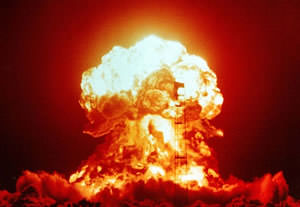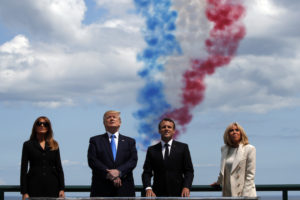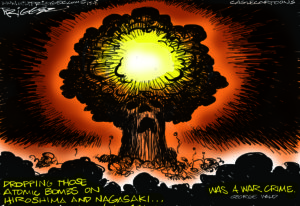Nuclear Treaty Turns 40
Four decades ago, officials from countries around the world signed the Treaty on the Non-Proliferation of Nuclear Weapons (NPT), pledging to bring the spread of those weapons to a halt. The treaty also pledged the signatories that possessed said weapons at the time -- such as the United States -- to get rid of their nuclear arms.
Four decades ago, officials from countries around the world signed the Treaty on the Non-Proliferation of Nuclear Weapons (NPT), pledging to bring the spread of those weapons to a halt. The treaty also pledged the signatories that possessed said weapons at the time — such as the United States — to get rid of their nuclear arms. So, how have the now 189 countries who eventually signed the NPT done in progressing toward this long-term goal?
Your support matters…Tad Daley in The Huffington Post:
The Bush Administration has concentrated enormous diplomatic firepower on keeping Iran from acquiring nuclear weapons, and on persuading North Korea to give up the nuclear weapons — even if few and small and unreliable — that most experts believe it constructed as early as 2002.
Indeed, it has not hesitated to rattle its military sword and even its nuclear sword, by incessantly repeating the mantra — as the president did in Europe regarding Iran just last month — “all options are on the table.”
At the same time, however, the Administration is proceeding to build something called a “reliable replacement warhead,” that will eventually replace every nuclear warhead category in the U.S. arsenal. And during its very first year in office, in its “Nuclear Posture Review,” it set in motion plans to deploy a new generation of long-range missiles to deliver nuclear weapons in 2020, a new submarine to deliver nuclear weapons in 2030, and a new long-range heavy bomber to deliver nuclear weapons in 2040.
Just in time for the centennial, in 2045, of the dawn of the atomic age.
Independent journalism is under threat and overshadowed by heavily funded mainstream media.
You can help level the playing field. Become a member.
Your tax-deductible contribution keeps us digging beneath the headlines to give you thought-provoking, investigative reporting and analysis that unearths what's really happening- without compromise.
Give today to support our courageous, independent journalists.









You need to be a supporter to comment.
There are currently no responses to this article.
Be the first to respond.